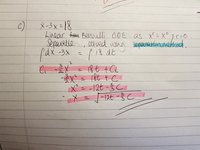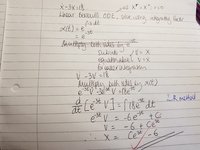Probability 0.99
New member
- Joined
- May 14, 2019
- Messages
- 13



I am unsure about whether the differential equation above is separable or not. At first, I believed it was and tried solving the differential equation using the separation method, it gave me the wrong answer. I could only obtain the right answer using the integrating factor method.
Why is this equation not separable? It appears X can be on one side and the other is just the function of t...
I don't major in Maths, so I am not sure where I have gone wrong when deciding whether this equation is separable or not.
Thanks
Last edited:
